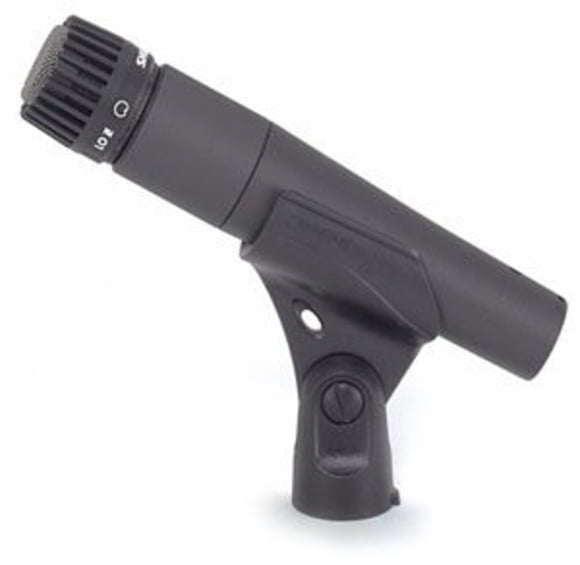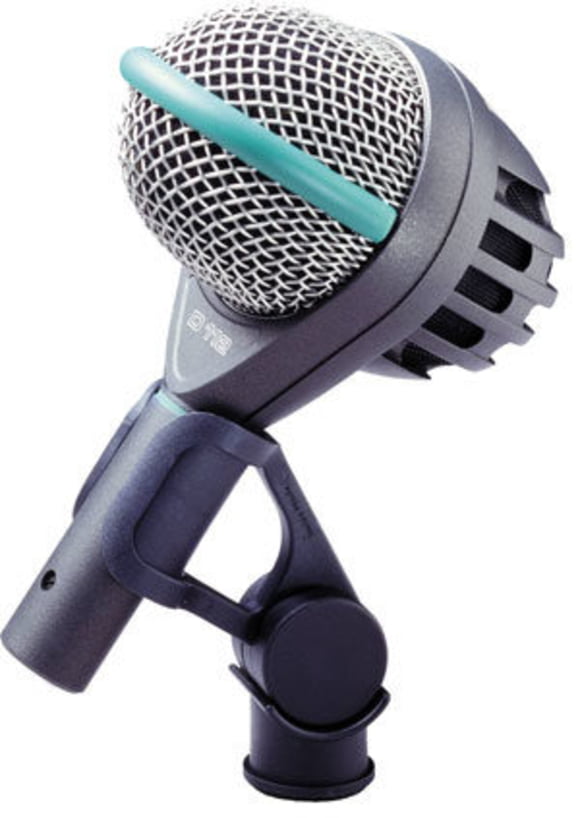3. Areas of application
Dynamic microphones are versatile and ideal for many situations. Their advantages make them required items for all sound engineers. They tend to be inexpensive, rugged, and resistant to moisture and do not require external power or internal batteries, unlike condenser microphones. Dynamics deal with high sound pressure levels (SPL) well, making them popular for miking drums. They also have higher gain before feedback, which can be crucial for live work, especially for vocals. Since they are rugged, most dynamics can stand the sort of abuse that occurs onstage. The Shure SM57 is well known for its ability to capture a snare drum and to survive being accidentally hit by the drummer. This mic, along with the SM58, is an industry standard and every live sound engineer owns a few of them.
The AKG D112 is a similarly popular bass drum microphone featuring a frequency response reaching well below 100Hz and a bump at 4kHz for a punchy beater sound.
The Shure SM58 is a popular mic for live vocals. These mics are so ubiquitous that they are often used as benchmarks when assessing another mics specifications: is this mic as durable as an SM57? How does the off-axis rejection of this mic compare to an SM58? How does the low end on this mic compare to a D112?
However, dynamic microphones are not just chosen for onstage use, but see frequent use in recording studios too. Many engineers wouldnt consider miking a snare drum or a guitar cabinet with anything other than a Shure SM57.





